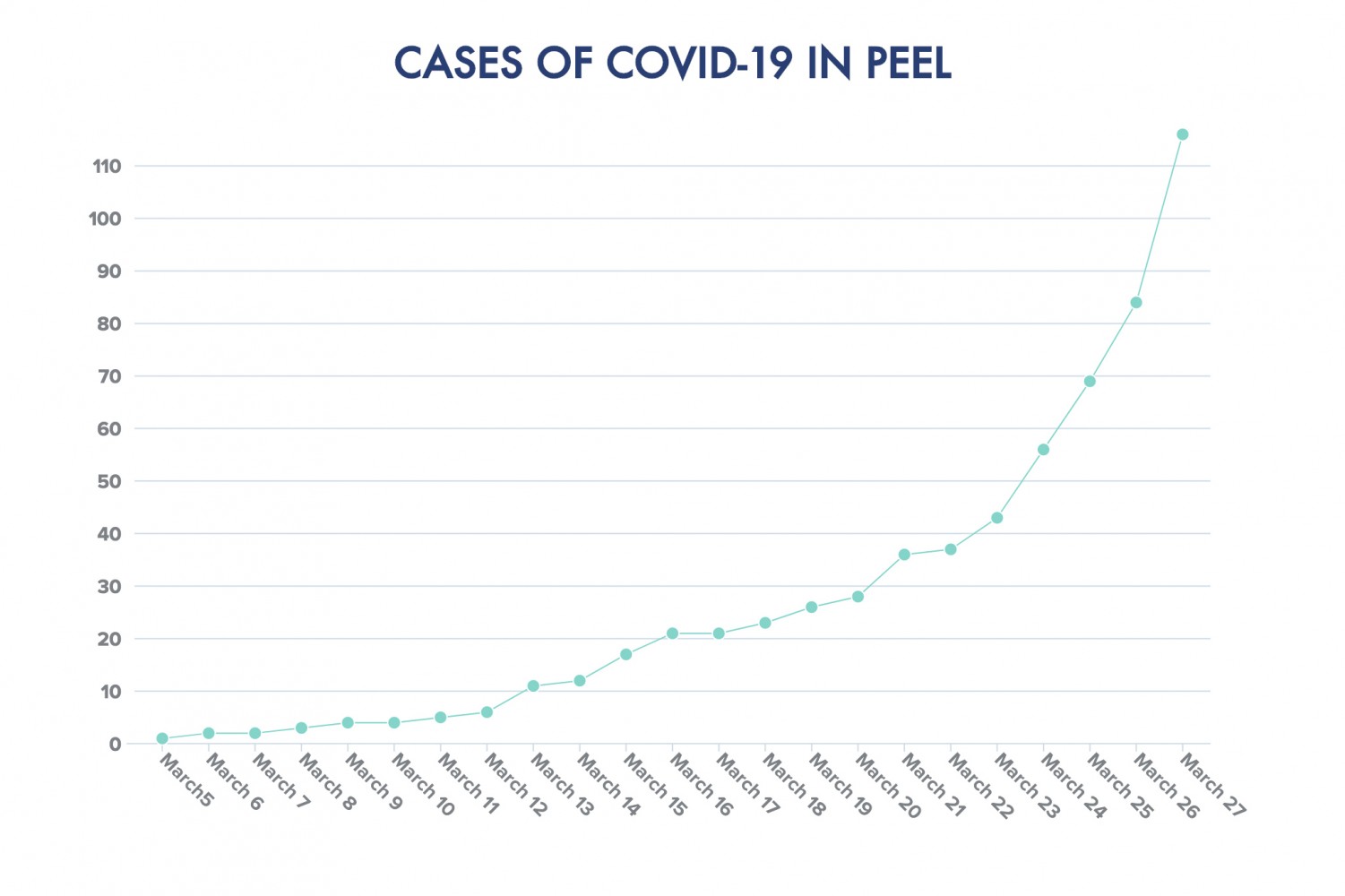
32 new cases of COVID-19 confirmed in Peel Friday, as region’s figures grow at dangerous rate
On Friday, Peel surpassed an unfortunate milestone as the region officially breached more than 100 cases of COVID-19. Peel Public Health confirmed 32 new cases of the novel coronavirus in the region, bringing the overall figure to 116.
It is the largest single-day spike in new cases to date and signals an acceleration of the spread of the disease since the first case was confirmed on March 5.
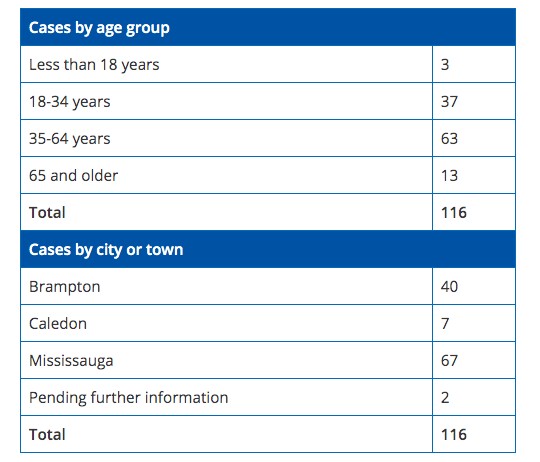
While there continue to be new cases related to travel, data from the federal government shows the majority of new cases in the country are being acquired through community transmission. It means the virus has gained a foothold in many communities across the nation, and those with particularly dense and large populations are more susceptible to spread, simply by sheer numbers.
In Toronto, health officials attribute 16 percent of the city’s 457 cases to community spread. For context, the City of Toronto, as of Thursday, had a COVID-19 infection rate of 1.52 per 10,000 people, which is close to the per capita rate for Canada, which sits at 1.23 per 10,000 people. And while this may appear low, consider this; the rate of infection across the United States (excluding New York, the hardest hit state) is 1.45 infected individuals per 10,000 people. So, excluding New York state, which has among the highest rates of any place in the world, Canada’s rate is not far behind the U.S.
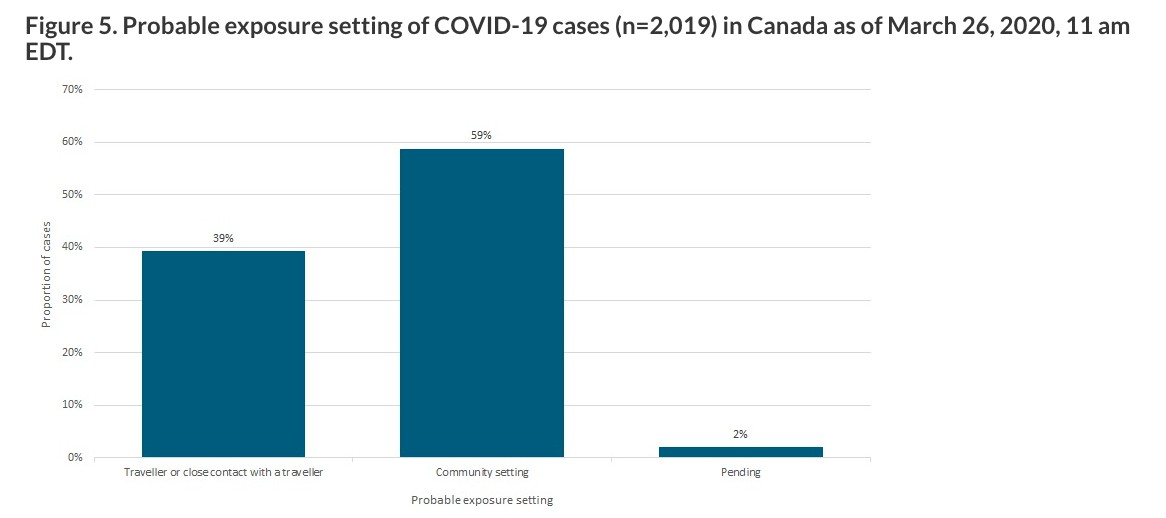
The majority of new COVID-19 cases in Canada are related to community transmission
However, trying to accurately compare infection rates between countries is difficult as this does not take into account harder hit areas, or far-flung communities in more isolated parts of the country which have no sign of COVID-19 infection or very low rates.
As of Friday morning Peel’s rate sat at 0.77 per 10,000 residents.
It’s a rate that has been accelerating in the region as more and more cases continue to be confirmed each day. In three days alone, between March 24 to March 27, cases have more than doubled from 56 to 116 this morning.
The increasing numbers are coming amid serious concern among frontline healthcare workers that there is not enough personal protective equipment (PPE) to protect them while treating highly infectious COVID-19 patients.
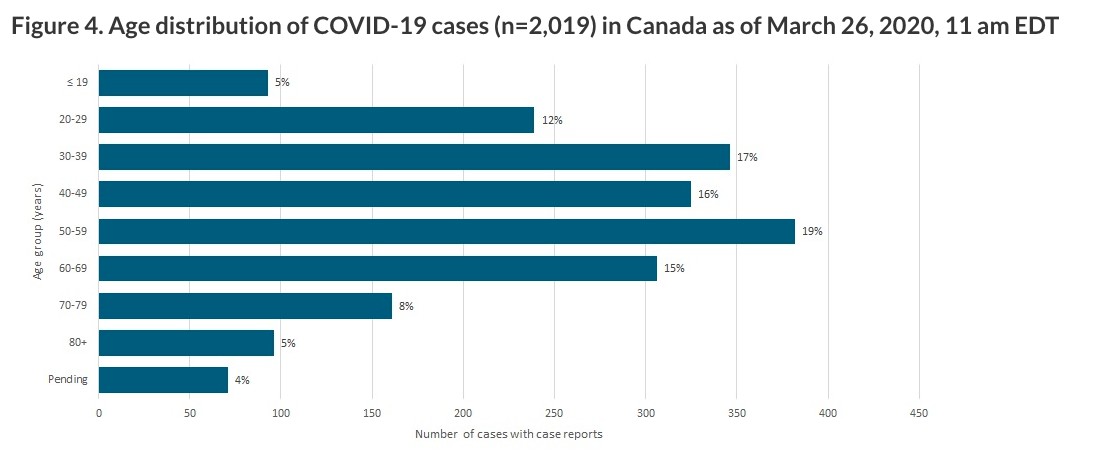
At least two Toronto hospitals are either short or conserving PPE in preparation for a serious outbreak, and the provincial organizations representing doctors and nurses have both issued statements urging both levels of government to begin preparing stockpiles of PPE to address increasing COVID-19 cases. William Osler Health System is also holding a PPE drive to try and increase its stores of essential medical supplies.
Health organizations, across all sectors, are reporting shortages of personal protective equipment (PPE) – a situation governments must urgently address,” reads a March 25 release from the Registered Nurses Association of Ontario (RNAO). “Furthermore we must be prepared for an exponential increase in the demand for PPE assuming worst-case scenarios for the COVID-19 pandemic. We all hope to avoid worst-case scenarios, but we must be prepared for them.”
The release also states that, along with PPE, the province must be prepared with an adequate supply of ventilators, equipment needed to support and keep alive patients with serious cases of COVID-19. Ontario has reportedly ordered 300 additional ventilators, but the RNAO says this vastly underestimates the need in a worse-case scenario. Pointing to New York state, the hardest hit area in the United States, officials were asking for 30,000 ventilators to support patients during the outbreak.
“We are in a war and the enemy is the COVID-19 virus. This is a ravaging pandemic that affects each and all of us at home and abroad,” the RNAO release reads “Tragically, we will lose too many loved ones due to COVID-19, but our goal must be that we will not lose even one patient or health-care worker that could have been saved if we had the proper PPEs or the ventilators to care for them.”
The Canadian Medical Association said much of the same in an open letter to Prime Minister Justin Trudeau, urging all levels of government to ensure adequate supplies of PPE and create support programs to address the need for childcare, wage compensation while quarantined and mental health supports for those on the front lines.
Unfortunately, according to data from the Ontario Health Coalition, the province’s hospitals are starting their fight against COVID-19 with fewer resources than other provinces.
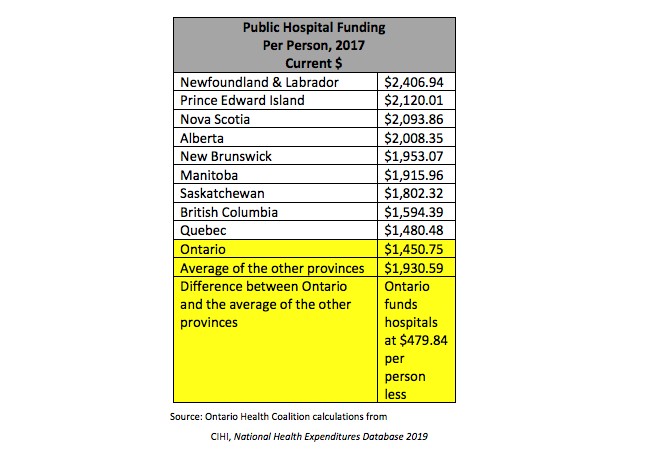
In 2017, Ontario spent roughly $480 less per person on hospital funding than other provinces
In 2017, Ontario spent approximately $1,450 per person on hospital funding that year, which was nearly $480 less than the average spent by Canada’s other provinces at $1,930 per person. Further, Ontario has one less hospital bed per 1,000 people at 2.2, than the provincial average of 3.2. The question of hospital beds will become increasingly significant in the province and in the Region of Peel if COVID-19 continues to spread as the most serious cases require intensive care in ICU and a ventilator to keep them alive.
Currently, Brampton Civic has 24 ICU beds with plans to increase capacity and Trillium Health’s Mississauga hospitals have 100 ICU beds with the potential to double that capacity.
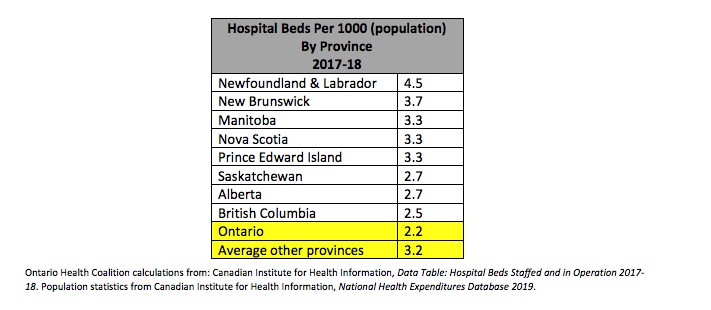
Ontario has one less hospital bed per 1,000 people at 2.2, than the provincial average of 3.2.
To date, the federal and provincial governments have taken numerous steps to limit the spread of the virus.
Yesterday, Prime Minister Justin Trudeau announced Canada would be implementing the Quarantine Act, which will now mandate a 14-day self-isolation period for those returning to the country — previously the self-isolation was only a recommendation. Now, if people are caught breaking the 14-day self-isolation period under the Act, they could face steep fines or even jail time. It’s a significant step for the federal government to impress upon Canadians the need to stay home and practice social and physical distancing in order to limit the spread of the virus. As of Thursday evening, Canada had 4,018 confirmed cases of the virus and 39 deaths, a significant increase from the approximately 1,500 confirmed cases at the start of the week.
The provincial government recently announced its $17 billion aid package to help residents, businesses and the healthcare system weather the storm of cases that is predicted to come.
The true impact of COVID-19 on the provincial economy is still unknown, but the province is dedicating approximately $10 billion of its aid package to help families and workers who may have lost their jobs as a result of COVID-19. Still, recent projections see the unemployment rate in the province skyrocketing.
According to a recent analysis by the Canadian Centre for Policy Alternatives (CCPA), approximately 2 million Canadians have been laid off or are at “immediate risk” of losing their jobs as a result of COVID-19. This is clear by the spike in EI applications that were filed with the government over the last week. In response, the federal government announced the new Emergency Response Benefit of $2,000 a month for anyone who says they’ve lost income as a result of COVID-19, regardless of their eligibility for EI. Anyone who filed an application for EI over the last week will have their application automatically redirected to the new ERB program.
The CCPA estimates that the national unemployment rate could double from where it stood at 5.9 percent in February to 10.9 percent as a result of COVID-19, unemployment levels not seen since 1994.
Email: [email protected]
Twitter: @JoeljWittnebel
Submit a correction about this story


